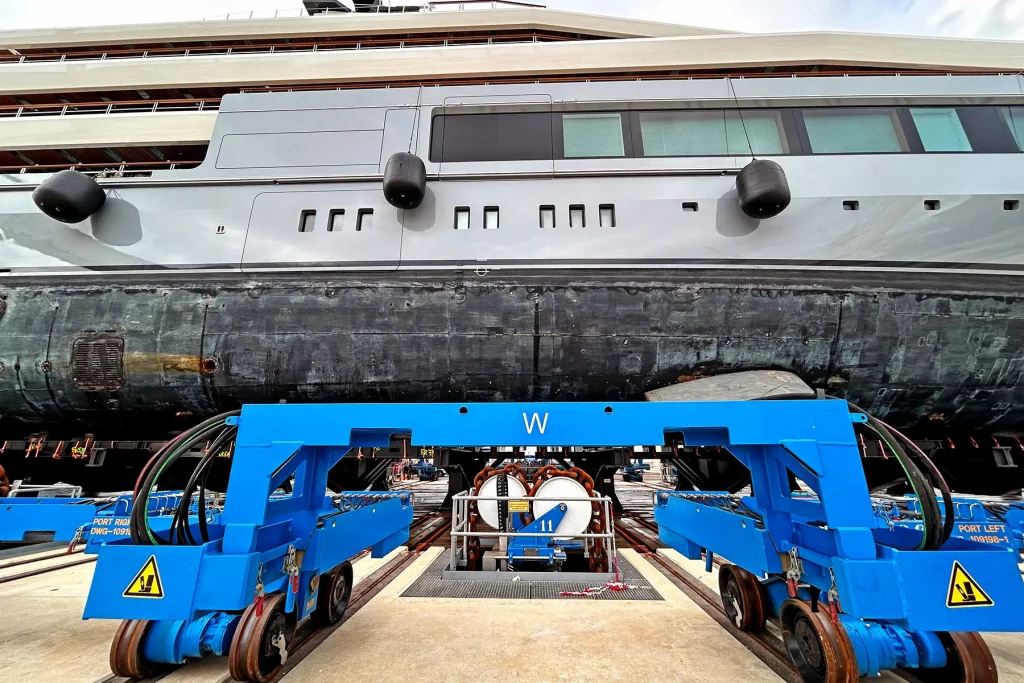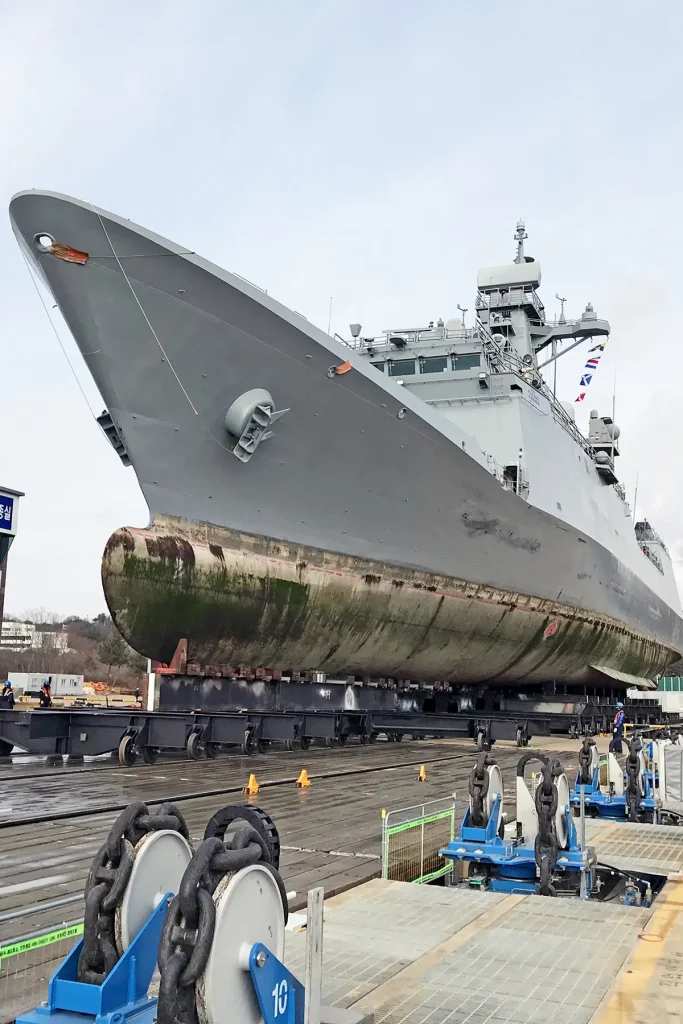- The Assist Framework
Building a national model for sovereign, scalable maritime sustainment infrastructure
Government has recognised that Australia will require upgraded maritime sustainment infrastructure in the years ahead. Meeting this need is not only about modernising individual shipyards, but also about developing a coordinated national approach aligned with Defence and industry priorities.
For decades, sustainment infrastructure has not kept pace with platform innovation. A lack of standardisation in shipyard design and delivery has contributed to reduced fleet availability and higher whole-of-life costs.
ASSIST addresses this challenge by embedding sustainment requirements into early planning and platform design, creating an optimised and standardised approach.
It provides a repeatable model that can be applied nationally – supporting Defence capability, strengthening industry participation, and advancing Australia’s broader strategic interests.

What ASSIST aims to support
A coordinated, sovereign-led and industry-backed approach to maritime sustainment infrastructure by:
- Standardising maritime sustainment infrastructure design and delivery.
- Embedding sustainment requirements early in vessel and facility planning.
- Enabling faster, more efficient and cost-effective infrastructure delivery and operations.
- Contributing to jobs, skills, and sovereign capability.
Principles guiding ASSIST
Standardisation
Use of common design standards (platform and infrastructure), modular systems, and interoperable facilities across sites and vessel classes.
- Reduces cost, risk and delivery time
- Enables fleet-wide compatibility and more efficient maintenance, supporting reduced time out of water.
Scalability
A delivery model designed with replication in mind – site to site, state to state.
- Supports cost-effective national application
- Builds operational redundancy and geographic resilience.
Sovereignty
Strengthened control of infrastructure, systems, supply chains, and workforce.
- Contributes to securing Australia’s industrial base
- Enables independent sustainment of current and future fleets and promotes readiness.
Five lines of effort
ASSIST – Cairncross Dockyard Brisbane (CDB)
Led by Cairncross Dockyard Brisbane Pty Ltd, Cairncross is the national pilot and demonstrator. It could bring together dry-docking, advanced shiplift systems, cradles, and operating systems, advanced manufacturing, green and advanced steels, smart sustainment technologies and workforce training.
ASSIST - Research and Innovation
Led by AMC Search (a division of the Australian Maritime College), with support from research partners and Original Equipment Manufacturers (OEMs), focusing on:
- 21st century drydock systems
- Advanced Materials
- Marine Corrosion
Assist - Operations
Led by Serco, in collaboration with platform OEMs and the local workforce. Focus areas include:
- Systems integration
- Dockyard management
- Workforce delivery and operations support
Assist - Supply Chain
Driven by sovereign capability partners including Bardex, Vulcan and Giflo Steels Australia. Focus areas include:
- Advanced steels and development of “Green” steel supply chain
- Critical systems and materials
- A secure and scalable procurement base.
Assist - Advance
Delivered by Trigonomics, Seymour Whyte, and education partners, delivering:
- Rapid, low cost, low risk, replication of the ASSIST model
- Infrastructure design and construction
- Smart build systems and modular yard components
- Workforce and skills uplift for national rollout
- Coordinated risk mitigation strategies.
Standardising sustainment INFRASTRUCTURE. Supporting fleet readiness.
ASSIST is aligned with the 2024 National Defence Strategy and 2024 Defence Industry Development Strategy. It offers a framework designed for national application to:
- Enable platform-aligned sustainment infrastructure
- Support Allied and partner interoperability through standardised systems and processes
- Anchor maritime capability in sovereign supply chains and industrial capacity
- Generate long-term economic and productivity dividends.

Frequently Asked Questions
ASSIST is a proposed sovereign-led, industry-backed initiative being advanced through the ASSIST Alliance. It provides a scalable model for modern shipyard sustainment infrastructure – one that can be shaped by government and industry to support Australia’s current and future naval and commercial fleets in a cost-effective and nationally aligned way.
Maritime sustainment infrastructure has often struggled to keep pace with advances in vessel design, reducing readiness and increasing costs. ASSIST is intended to address this by promoting a standardised approach to shipyard sustainment infrastructure that enables faster, more cost-effective delivery and strengthens sovereign control of critical systems.
CDB is the pilot site for the ASSIST model. It will combine existing assets with targeted upgrades (e.g. modern shiplifts and cradles) to demonstrate how the model could operate in practice. The site will also play a central role in research, innovation and workforce development in maritime sustainment, directly supporting sovereign capability and national skills priorities.
ASSIST seeks to strengthen Australia’s control over sustainment shipyard capability - including infrastructure, systems, skills, and supply chains. It will achieve this by involving sovereign-capable partners, encouraging local industry participation, and building resilient supply chains to underpin independent sustainment of Defence and commercial fleets.
ASSIST is being advanced through the ASSIST Alliance – an emerging group of companies, institutions, and research organisations with Defence and industry experience. Structured around defined lines of effort, the Alliance covers infrastructure delivery, operations, research and supply chain resilience. Importantly, it remains open to government, Defence, and new industry partners who wish to contribute.
There are multiple ways to engage with ASSIST – through supply chains, research partnerships, workforce initiatives, or sustainment discussions. The Alliance is open to collaboration, and welcomes Government, Defence, industry, and academic stakeholders to explore site visits, briefings, or other opportunities for alignment.
